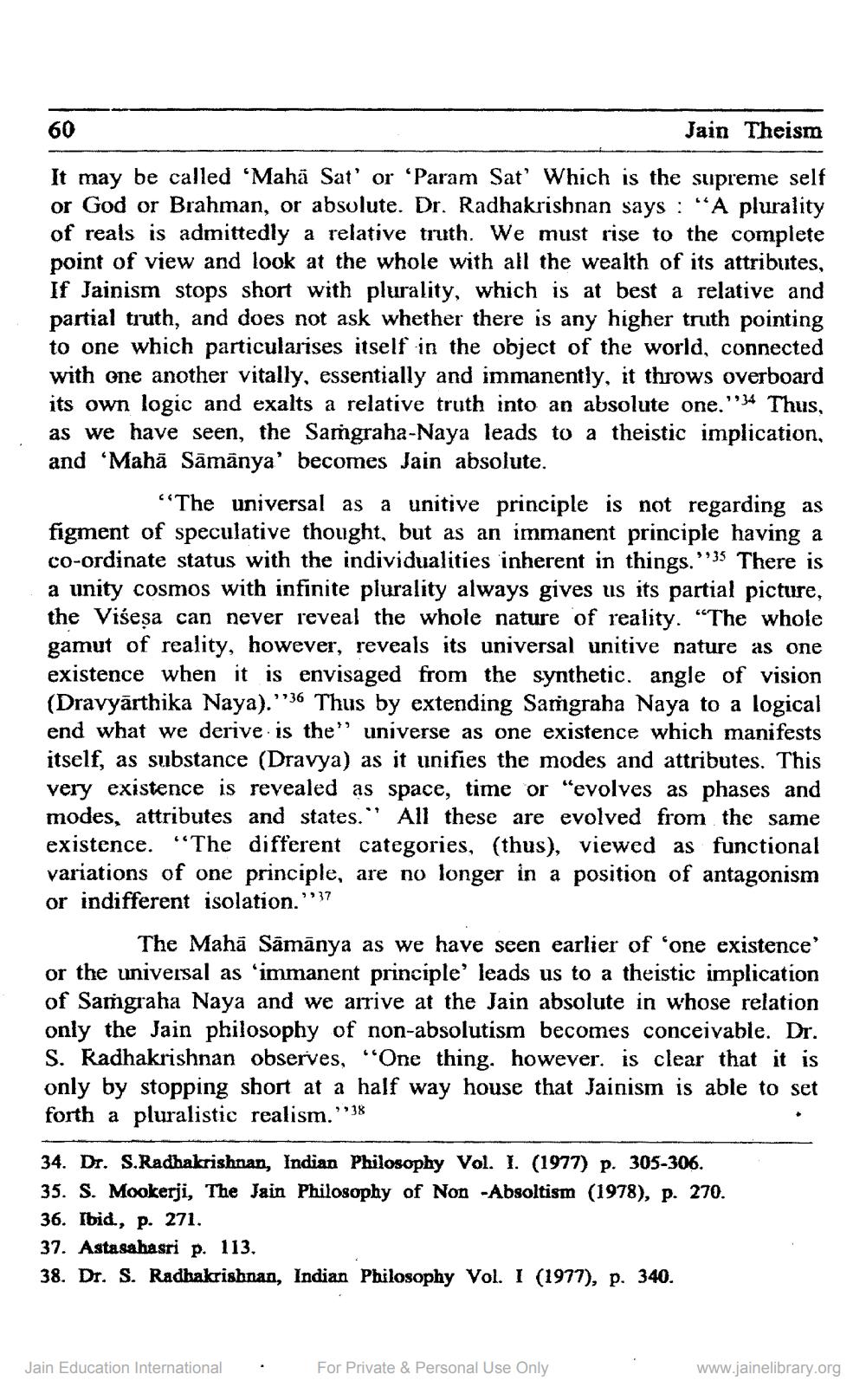________________
60
It may be called 'Maha Sat' or 'Param Sat' Which is the supreme self or God or Brahman, or absolute. Dr. Radhakrishnan says: "A plurality of reals is admittedly a relative truth. We must rise to the complete point of view and look at the whole with all the wealth of its attributes, If Jainism stops short with plurality, which is at best a relative and partial truth, and does not ask whether there is any higher truth pointing to one which particularises itself in the object of the world, connected with one another vitally, essentially and immanently, it throws overboard its own logic and exalts a relative truth into an absolute one." 34 Thus, as we have seen, the Samgraha-Naya leads to a theistic implication, and 'Mahā Sāmānya' becomes Jain absolute.
"The universal as a unitive principle is not regarding as figment of speculative thought, but as an immanent principle having a co-ordinate status with the individualities inherent in things."35 There is a unity cosmos with infinite plurality always gives us its partial picture, the Visesa can never reveal the whole nature of reality. "The whole gamut of reality, however, reveals its universal unitive nature as one existence when it is envisaged from the synthetic. angle of vision (Dravyarthika Naya)." 36 Thus by extending Samgraha Naya to a logical end what we derive is the" universe as one existence which manifests itself, as substance (Dravya) as it unifies the modes and attributes. This very existence is revealed as space, time or "evolves as phases and modes, attributes and states." All these are evolved from the same existence. "The different categories, (thus), viewed as functional variations of one principle, are no longer in a position of antagonism or indifferent isolation."'37
Jain Theism
The Mahā Sāmānya as we have seen earlier of 'one existence' or the universal as 'immanent principle' leads us to a theistic implication of Samgraha Naya and we arrive at the Jain absolute in whose relation only the Jain philosophy of non-absolutism becomes conceivable. Dr. S. Radhakrishnan observes, "One thing. however. is clear that it is only by stopping short at a half way house that Jainism is able to set forth a pluralistic realism."38
34. Dr. S.Radhakrishnan, Indian Philosophy Vol. I. (1977) p. 305-306.
35. S. Mookerji, The Jain Philosophy of Non -Absoltism (1978), p. 270.
36. Ibid., p. 271.
37. Astasahasri p. 113.
38. Dr. S. Radhakrishnan, Indian Philosophy Vol. I (1977), p. 340.
Jain Education International
For Private & Personal Use Only
www.jainelibrary.org




